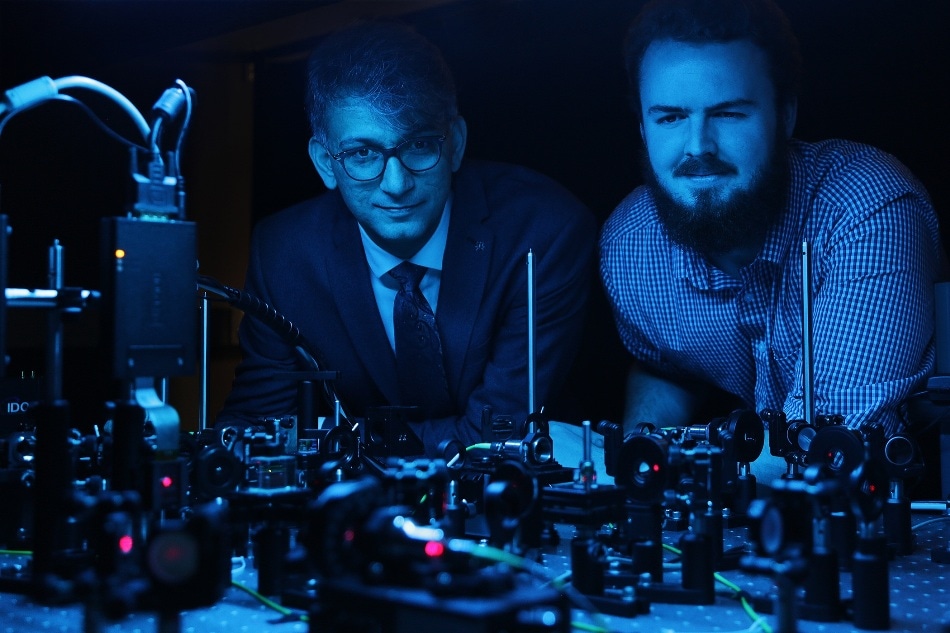Feb 6 2017
 Professor Ebrahim Karimi, a member of uOttawa's Department of Physics and holder of the Canada Research Chair in Structured Light, and doctoral student Fr�d�ric Bouchard observe the setup they used to clone the photons that transmit information, called qudits. (CREDIT - University of Ottawa)
Professor Ebrahim Karimi, a member of uOttawa's Department of Physics and holder of the Canada Research Chair in Structured Light, and doctoral student Fr�d�ric Bouchard observe the setup they used to clone the photons that transmit information, called qudits. (CREDIT - University of Ottawa)
Protecting traditional computer units that use zeros and ones from hackers is no longer a perfect science, as was seen in the 2016 US election.
In the world of quantum computing, bits of information can contain multiple states beyond zero and one at the same time, which makes the potential threats even more challenging to handle. Nevertheless, a team of researchers from the University of Ottawa have discovered clues that could assist administrators protect quantum computing networks from hackers.
Our team has built the first high-dimensional quantum cloning machine capable of performing quantum hacking to intercept a secure quantum message. Once we were able to analyze the results, we discovered some very important clues to help protect quantum computing networks against potential hacking threats.
Ebrahim Karimi, Professor, University of Ottawa
Karimi holds the Canada Research Chair in Structured Light.
Quantum systems were considered to provide absolutely secure data transmission because attempts to copy the transmitted information only led to a deteriorated or altered version of the original information, hence defeating the reason of the primary hack.
A hacker can simply copy and paste data and replicate it exactly from a traditional computing system. But this will not be possible in the quantum computing world, as copying quantum data or qubits only result in what Karimi calls as “bad” copies.
But for the first time, Professor Karimi’s team successfully cloned the photons that convey information, i.e., the single carriers of light referred to as qubits, as well as quantum theory allows, meaning that the clones were approximately precise copies of the original data.
However, in addition to undermining what was formerly thought to be an ideal approach to securely transmit information, the researchers’ analysis showed promising clues as to how data can be protected against such hacking.
What we found was that when larger amounts of quantum information are encoded on a single photon, the copies will get worse and hacking even simpler to detect. We were also able to show that cloning attacks introduce specific, observable noises in a secure quantum communication channel. Ensuring photons contain the largest amount of information possible and monitoring these noises in a secure channel should help strengthen quantum computing networks against potential hacking threats.
Frédéric Bouchard, Doctoral Student, University of Ottawa
Karimi and his team anticipate that their quantum hacking efforts could be applied to explore quantum communication systems, or more commonly to research the way quantum information travels throughout quantum computer networks.